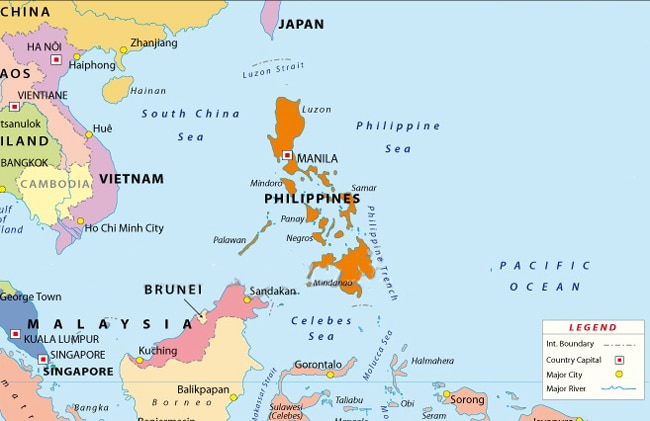Outbound mobility gathering steam in the Philippines
The number of Philippine students studying abroad is up sharply in recent years, fuelled by a rapidly growing economy, high levels of youth unemployment, strong outbound migration, and a strengthening field of education agents.
A little more than a decade ago, in 2001, there were just over 5,500 tertiary-level Filipino students enrolled abroad. By 2012, outbound enrolment had climbed to 11,210 with much of that growth occurring in the period 2006-2012.

Higher education participation rates projected to grow
Primary and secondary enrolment in the Philippines exceeded 24 million in 2010, 82% of which was in public schools. Australian Education International notes, “Only a small percentage of high school graduates proceed to higher education. The gross enrolment rate at the tertiary level (TVET and higher education) in 2008 was 29%. Technical Education and Skills Development Authority (TESDA) estimates that only 10% of high school graduates enroll in TVET while 23% go on to higher education.”

Growing economy but troubling employment outlook at home
The Philippine economy took off in 2012, growing 6.6% that year compared to a more modest 3.9% growth rate only a year earlier. It has maintained the same lively clip through the first half of 2014, and was the fastest-growing ASEAN economy in 2012 not to mention the second-fastest in Asia (outpaced only by China that year). An ACPET market commentary adds, “Due to strong economic growth, key industries require professional and skilled workers who meet international standards. The government has identified priority sectors, including tourism, infrastructure and agriculture. In addition, demand for high calibre talent is being driven by growth in industries such as banking and finance, ICT and business process outsourcing and advanced manufacturing.” These priorities are no doubt intended to address some of the persistent structural issues in the Philippine economy, notably high levels of youth unemployment. Overall unemployment rates in the country climbed to 7.5% early in 2014, after having traveled in the range of 6.5-7.1% over the previous year. As is the case in many world markets, however, employability is an even bigger concern for youth. “Unemployment among younger graduates can be as high as 45%,” reports University World News. “Employment prospects for those under 29 years old are particularly poor. Almost 50% of the population aged 15 to 23 is unemployed.” It appears that this challenging employment outlook at home has combined with a hot economy (and growing family incomes) in recent years to boost the number of outbound students. UNESCO reports that the vast majority of Philippine students are self-funded and adds, “The growing number of non-scholarship or unsponsored overseas Filipino students could mean that the country now has more affluent families who can afford to finance studies abroad. There may be other explanations for this development, though, such as overseas studies serving as entry, transit or a concurrent channel for overseas employment.”
Education reforms continuing this year
The Philippine education system has been the focus of considerable reforms in recent years, both in its K-12 system and in higher education. Of particular note has been the expansion of the secondary education system to include two additional years of study. Students now study for 12 years of basic education, rather than under the previous 10-year system, a move that has led the government to dramatically expand school facilities and to projections that 81,637 additional teachers will be required for Philippine schools in the years ahead. This systemic change effectively removes a serious historical impediment to outbound mobility: the basic education qualifications of outbound students. More recently, the Philippine government has announced a number of further initiatives:
- In September 2014 they announced a plan to build eight “globally competitive” universities within the next three years. Commission on Higher Education representative Ruperto Sangalang elaborated at a recent education forum: “Globally competitive universities have high quality campuses and well equipped buildings and facilities, have outstanding leaders with global vision and strategies, and enjoy academic freedom and autonomous governance structures.”
- In June 2014, they unveiled new legislation (the Ladderized Education Interface Act) to allow vocational education and training (VET) students and graduates to transfer VET credits towards degree programmes at universities.
- Also in June 2014, they revealed plans for the expansion of distance learning services within the country (the Open Distance Learning Act) and measures to harmonise grant and scholarship programmes (the Unified Student Financial Assistance System for Higher Technical Education Act).
These reforms are designed to improve the competitiveness and quality of the education system. It remains to be seen what impact they may have on outbound mobility, particularly in relation to broader shifts in demographics and economics that are in play in the Philippine market this decade.
Another impact to watch closely will be the extent to which such measures further boost the appeal of the Philippines as a regional study destination.
With its expanding education system, affordability, and widespread use of English, the Philippines continues to emerge as an important education hub in Southeast Asia and to attract increasing numbers of students from across the region. The Philippine Bureau of Immigration reports that student visa approvals were up 14% in 2012 for a total of 47,478 student visas and permits compared to 41,443 in 2011. World Education News & Reviews adds that, “Most students in the Philippines are there on special study permits (SSP), which are issued for short courses, such as English language training, and for primary and secondary schooling. A total of 31,000 SSPs were issued [in 2012] versus 16,478 student visas, typically aimed at those studying at universities or colleges.”
















